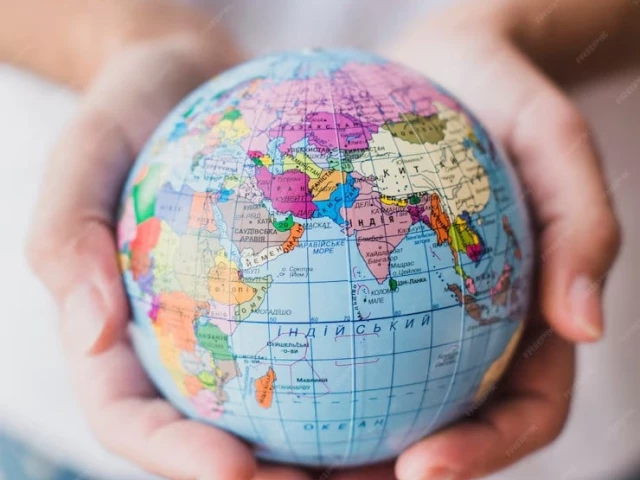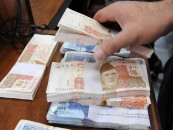Is this the end of globalisation?
Perhaps not, but international trade is shifting, necessitating a reset in free trade practices

Over the past six years, globalisation has come under immense pressure, particularly since 2018, when Washington and Beijing sparked a tariff war over $450 billion worth of goods. That same year, the US also withdrew from the landmark North American Free Trade Agreement (Nafta) with Mexico and Canada, citing a drastic shift of manufacturing jobs from the US to Mexico since 1994.
At the time, many called it the end of the free-trade era and a retreat from globalisation, as nationalist movements blamed globalisation for uneven economic development, labour exploitation, and environmental degradation. Yet, despite growing discontent with the prevailing multilateral system, globalisation has somehow survived.
In 2020, Nafta was renegotiated as the United States-Mexico-Canada Agreement (USMCA). Though it was more favourable to the US, it remained fair and acceptable to all parties. Similarly, today, China remains the US's largest trading partner despite escalating tensions and sanctions imposed on Beijing.
This extraordinary resilience of globalisation is due to a multi-pronged approach employed by Washington. High tariffs on Chinese electronics and a staggering 100% tariff on Chinese electric vehicles have had minimal impact on global trade, as other Southeast Asian economies – such as Taiwan, Vietnam, and Thailand – still enjoy zero tariffs on their manufactured goods. As a result, America's trade imbalances with China have simply translated into massive trade deficits with Asia overall.
Meanwhile, Beijing has doubled down on manufacturing, with its export growth rate remaining in double digits. Since China's real estate crisis, domestic demand has weakened, but its export numbers remain impressive, sustaining GDP growth.
Over the past four years, Chinese automotive exports have surged from one million cars per year to over six million by the end of 2024; more than 30% of which are electric vehicles (EVs) and hybrids.
This export capacity could rise to 10 million cars if the US removes tariffs on Chinese automobile imports. Estimates suggest China has the annual capacity to produce over 40 million conventional cars and 20 million EVs, but weaker domestic demand has left factories underutilised.
China's economic system is designed for high growth – prioritising high investment rates and low consumer spending – creating a constant need for more factories. With its economy now heavily reliant on exports, Beijing is unlikely to compromise on trade sanctions.
That is why, since the 2018 trade wars, China has expanded into new markets beyond the US and EU, including Saudi Arabia, Brazil, Mexico, and Turkey, while offloading cheaper cars into emerging economies.
Ironically, amid trade wars, Shanghai still produces almost half of the world's Teslas – thanks to massive financing from Chinese state banks at below-market interest rates and a special 15% tax rate. Given Tesla CEO Elon Musk's close ties with US President Donald Trump, speculation persists that these trade wars are politically and geopolitically motivated, aiming to secure greater subsidies from the US government while fuelling nationalist sentiments.
If Washington is using tariffs as a geopolitical tool to deter China from expanding its influence in the South China Sea or annexing Taiwan, the strategy may not be effective – China holds the upper hand economically.
Beijing has accumulated nearly $770 billion in US government bonds, allowing it to maintain low export prices. If the US attempts to reduce its trade deficit with China by curbing trade volume, Beijing could retaliate by dumping its treasury holdings, potentially triggering a market shock, raising interest rates, and slowing economic growth and employment.
However, this so-called market shock theory remains speculative. In 2018, China held $1.2 trillion in US treasury bonds, but by 2024, following the trade war, it had reduced its holdings to $770 billion – without causing hyperinflation in the US. If this trend continues, China's treasury portfolio could drop below $250 billion by 2029, while the US economy could still maintain modest growth.
This suggests that globalisation is here to stay and isn't going anywhere any time soon. The dynamics of international trade, however, are shifting, necessitating a reset in existing free-trade practices. Countries like Mexico and Thailand have benefited significantly from the trade wars, increasing their tariffed-product exports to the US by 6%, offsetting the decline in Beijing-Washington trade.
Whether it's the disruption of energy and food supply chains due to the prolonged Russia-Ukraine war or new tariffs on Chinese goods, trade is gradually shifting from economic superpowers to emerging economies like those in the Asean (Association of Southeast Asian Nations) bloc.
In summary, while the rhetoric of de-globalisation continues to shape global narratives, it is clear that globalisation and capital flows will persist – albeit under evolving business rules as the world navigates one crisis after another.
THE WRITER IS A CAMBRIDGE GRADUATE AND IS WORKING AS A STRATEGY CONSULTANT



















COMMENTS
Comments are moderated and generally will be posted if they are on-topic and not abusive.
For more information, please see our Comments FAQ